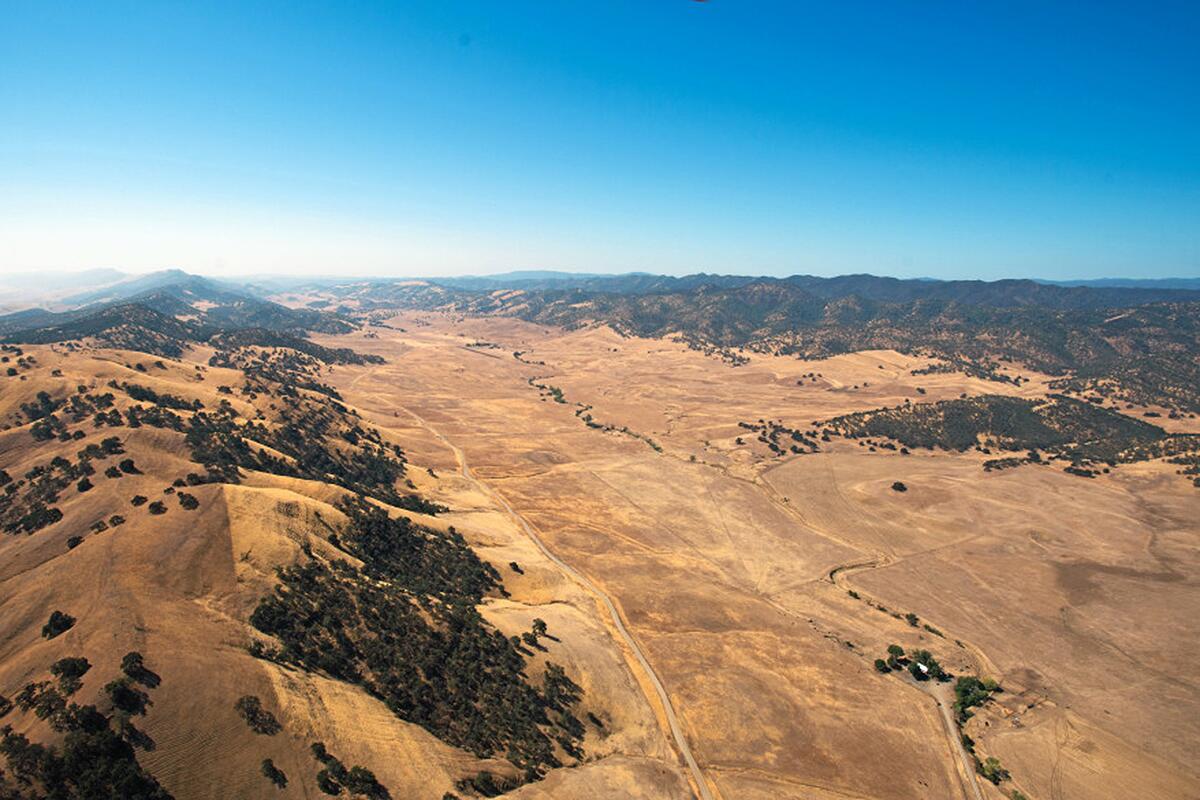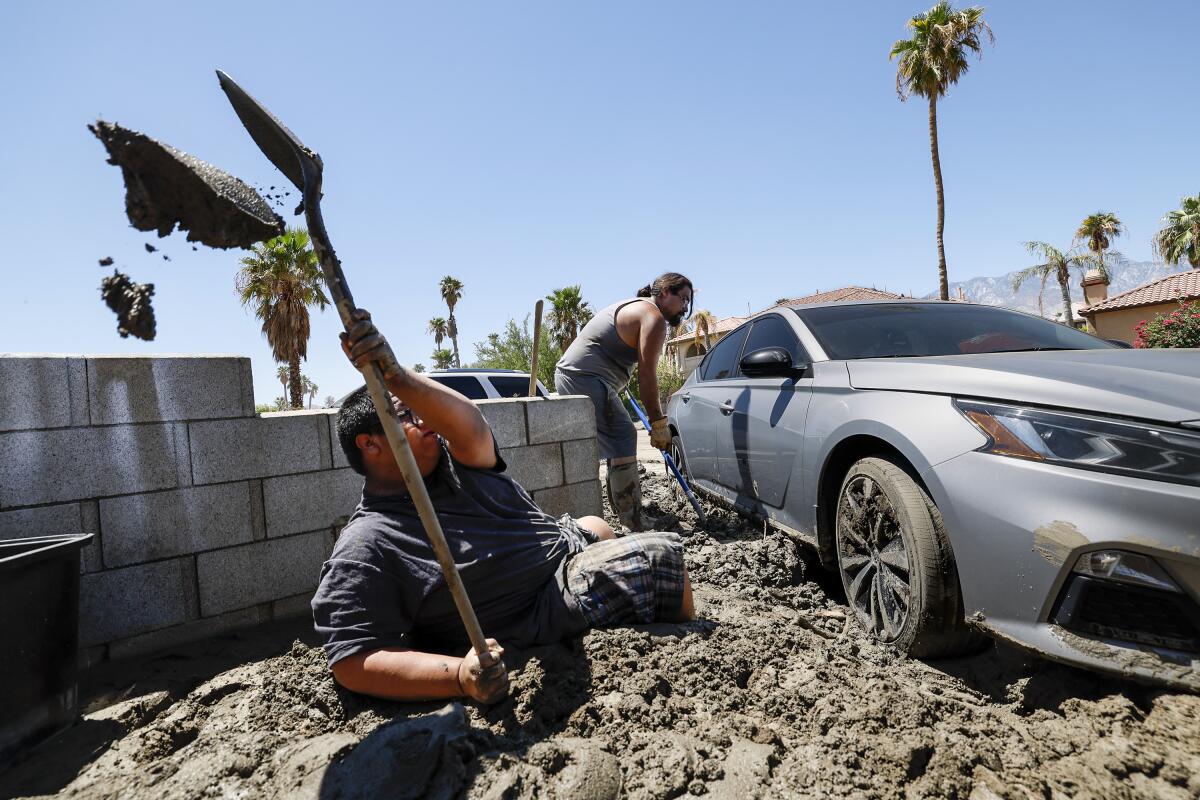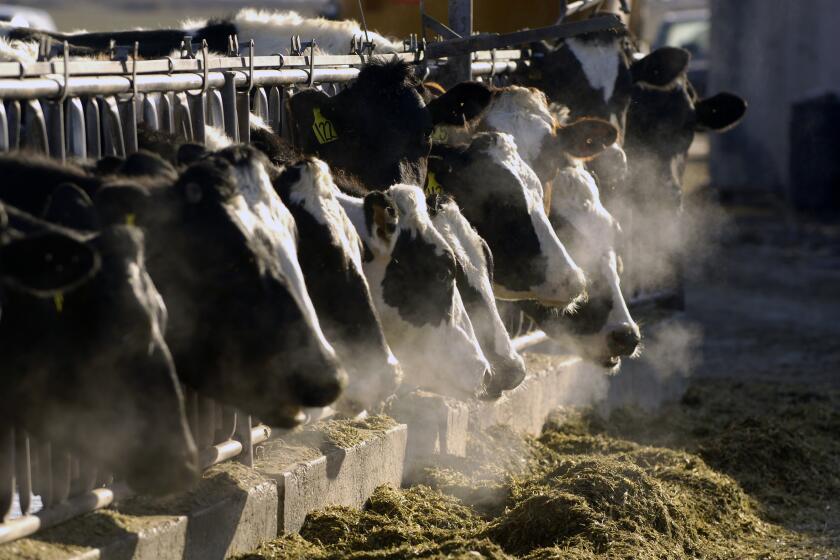Boiling Point: Would filling a new reservoir give off lots of greenhouse gases?

- Share via
This story was originally published in Boiling Point, a weekly newsletter about climate change and the environment. Sign up here to get it in your inbox.
Hi, Boiling Point readers. I’m Ian James, water reporter at The Times, writing the newsletter this week for Sammy Roth.
When you think about sources of planet-heating greenhouse gases, dams and reservoirs probably aren’t some of the first things that come to mind.
But scientific research has shown that reservoirs emit significant amounts of methane, a potent greenhouse gas. It’s produced by decomposing plants and other organic matter collecting near the bottom of reservoirs. Methane bubbles up to the surface of reservoirs, and also passes through dams and bubbles up downstream.
Scientists call these processes ebullition and degassing.
And there is a growing debate about how much of these gases would be emitted by California’s planned Sites Reservoir, which is slated to be built in a valley north of Sacramento to store water for agriculture and cities.
When I recently learned of a new analysis estimating the greenhouse gas emissions of the Sites Reservoir project, I was intrigued. The results of the analysis appear in a report prepared by the environmental groups Friends of the River and Tell The Dam Truth, an effort funded by the clothing company Patagonia.
The groups used a newly developed modeling tool to estimate greenhouse gas emissions, including methane and other gases, over a 100-year period. The findings were striking: They estimated that if the reservoir is built and filled, it would annually emit approximately 362,000 metric tons of emissions, measured as carbon dioxide equivalent.
They said that’s about the same as putting an additional 80,653 gasoline-fueled cars on the roads.
The authors of the analysis, including environmental activist Gary Wockner, ecologist Mark Easter and hydrologist Gordon McCurry, wrote in the report that decision-makers in public agencies need to consider the emissions the project would cause as they weigh permitting and funding.
The groups said they are submitting the analysis during a protest period as the State Water Resources Control Board considers whether to grant a water right permit for the project, which would authorize the reservoir to store up to 1.5 million acre-feet of water.
To learn more about the issue, I spoke with those who worked on and supported the analysis, as well as an independent scientist and a representative of the public agency that’s leading the planning of the $4 billion project.
Wockner, who leads Tell The Dam Truth, said the analysis shows that if state and federal agencies endorse and fund the reservoir, “they’re going to be making climate change worse.”
Wockner’s team looked at emissions from construction, operations and eventual decommissioning of the reservoir. Their modeling tool also estimated emissions from inundated vegetation, gases bubbling to the surface and methane-rich water passing through power-generating turbines, among other things.
In addition to methane, they estimated emissions of nitrous oxide and carbon dioxide.
“It’s actually a very large emitter,” Wockner said.
The reservoir’s proponents disagree. The Sites Project Authority has presented much smaller estimates of greenhouse gases using different methods, and the agency’s leaders have set a goal of making the project “net-zero” in emissions.
The reservoir is to be built in a valley fringed with oak trees, where cattle now graze on the grasslands. Plans call for two large dams about 300 feet high, as well as nine smaller dams, which would hold water diverted from the Sacramento River and inundate about 14,000 acres.
Activists with the group Friends of the River oppose the project for a variety of reasons, including concerns that diverting water would be harmful to struggling fish populations and the ailing ecosystem of the Sacramento–San Joaquin River Delta. They told me the estimates of emissions add another substantial minus to what they see as a long list of negatives.
“It’s important to understand what those costs are,” said Jann Dorman, Friends of the River’s executive director. “It’s just really important for the people of California, and actually around the world, to understand the true costs of these things.”
Dorman’s group supports other sorts of water strategies, such as efforts to replenish aquifers and store water underground, as well as conservation measures and water recycling.
Keiko Mertz, the group’s policy director, said given California’s lofty climate goals, she hopes decision-makers think twice about building the reservoir and putting more planet-warming gases into the atmosphere.
“I would argue this is backward, especially with the methane emissions specifically being an incredibly potent greenhouse gas,” Mertz said. “I hope that they look at this as a piece of the overall totality of reasons that Sites Reservoir is really not an answer for 21st century water management.”
Patagonia has long advocated for river protection and river restoration, including by supporting the removal of the Elwha Dam in Washington and long-planned efforts to remove the Matilija Dam near the company’s Ventura headquarters, as well as producing a 2014 documentary titled “DamNation.”
“It’s become increasingly apparent to us, as we’ve been focusing on this issue, across so many different projects, so many different rivers and places around the world, that dams are not only pretty hard on natural communities and human communities, they also have direct impact on the climate crisis,” said Hans Cole, head of Patagonia’s environmental team.
Scientists have in recent years found larger greenhouse gas emissions from reservoirs than previous studies had suggested. Cole said Patagonia decided to support the development of the new model for estimating greenhouse gases, called All-Res, drawing on the latest research.
“I think this is a new and important topic in our nation’s climate conversation,” Cole said. “We’re just trying to shed light on the fact that dams, reservoirs, while they are purported to be climate solutions, they’re actually in many cases climate catastrophes. They do not bring the benefit that outweighs the costs.”
To find out how the project’s proponents respond to these concerns, I spoke with Jerry Brown, executive director of the Sites Project Authority (who isn’t related to the former governor by the same name). Brown said he hadn’t seen the analysis but that his agency did its own analysis of the project’s emissions using standard methods established by the Intergovernmental Panel on Climate Change, or IPCC.
“I can’t really comment on their determination of methane,” Brown said. “I do know that when we look at our site, and we looked at our means to avoid methane emissions, we have a condition in our environmental document to remove vegetation and material from the bottom of the reservoir before we fill it with water. And that goes a long ways to eliminating the source of the methane production.”
Another design feature that will help, he said, is an “inlet/outlet” structure with multiple intake openings that can pull in water at different reservoir levels.
Brown said the agency has outlined measures to minimize emissions and mitigate for emissions that occur.
“The high bar that we’ve set for ourselves is to say that over the life of the project, we want to be net-zero,” Brown said.
“That is consistent with the state’s objectives to achieve reduction goals across the entire state,” Brown added. “It’s not been typical that projects have set that kind of goal for themselves. And by doing so, we are offsetting, eliminating, avoiding any additional emissions as a result.”
Brown and other supporters of the project, among them Gov. Gavin Newsom, say the reservoir is needed to ensure supplies as climate change puts growing strains on California’s limited water supplies. They also tout its planned off-stream location, which unlike other dams wouldn’t block migrating fish. Storm water diverted from the Sacramento River would be transported to the reservoir.
Sites would be the state’s first major new reservoir since 1999. The Sites Project Authority aims to secure the necessary permits to start construction by the end of 2025, which would allow the first filling of the reservoir in 2032 or 2033, Brown said.
“Overall, the project is a positive for climate,” Brown said. “This is a project that needs to be built and will help California into the next century.”
Wockner said he strongly disagrees with the estimates in the project’s environmental review documents.
“The two biggest sources of emissions are what comes off the surface and what comes off the turbines, and they don’t even bring those up,” Wockner said. “It’s a vast undercounting of the true emissions.”
His team estimated that over 100 years, the reservoir project would emit approximately 36.2 million metric tons of CO2 equivalent.
Wockner, who also leads the group Save The Colorado, has sought to draw attention to climate-warming gases coming from the country’s dams and reservoirs, and last year praised a decision by the Environmental Protection Agency to start including methane emissions from U.S. reservoirs in an annual report to the United Nations.
In a 2021 study, scientists estimated that the world’s reservoirs are annually giving off greenhouse gases equivalent to 1.07 gigatons of CO2 — a relatively smaller piece of the picture if compared the more than 36 gigatons of emissions from the burning of fossil fuels and other industrial sources, but still significant.
John Harrison, the study’s lead author and a professor at Washington State University, read the findings by the environmental groups and said the per-area methane emissions rates they used in their analysis are within the rate reported for reservoirs in temperate regions, “albeit toward the high end of the distribution and quite a bit higher than emissions from temperate zone reservoirs of comparable size.”
Harrison said in an email that he thinks it’s important to work toward the kind of estimates the groups have attempted, but “due to a lack of supporting data and relevant studies, many of the flux estimates put forth in this report are necessarily quite uncertain.”
The science is rather complex, so I asked Harrison if he could help explain how reservoirs give off methane.
“Methane is produced when organic matter rots in the absence of oxygen,” Harrison wrote back. “By slowing water down and creating slow-moving, stratified environments, dams both create hotspots for organic matter deposition and limit oxygen penetration into sediments and bottom waters, thereby creating favorable conditions for the production, and eventual emission of methane.”
Harrison explained that there’s more to the science, including another key point: If organic matter were to flow downstream and reach the coast instead of settling behind a dam, “it is likely that it would be converted to CO2, not methane, and therefore have a smaller climate impact.”
Summarizing the science, he said: “Freshwater reservoirs are consistently net sources of methane to the atmosphere, and collectively these water bodies constitute an important greenhouse gas source at regional, global, and national scales.”
Here is a look at some of our coverage in the Los Angeles Times this week:
In the Coachella Valley, Tropical Storm Hilary dumped more than half a year’s worth of rain, leaving some desert neighborhoods awash in mud-filled streets. Brittny Mejia, Alex Wigglesworth and other Times journalists reported on the aftermath as people in parts of Cathedral City and other communities began to dig out from the debris. Mejia also chronicled rescues amid the muddy havoc on one street, where she wrote that for one family, “help came in the form of a construction worker, a Realtor and a new white pickup truck.” Reporter Terry Castleman shared dramatic before-and-after satellite images showing how the floodwaters flowed across the desert, and reporters Rong-Gong Lin II and Grace Toohey spoke with meteorologists about why the storm hit some areas much harder than others.

Adel Hagekhalil sees his job as being something of a “water doctor” for Southern California. As general manager of the Metropolitan Water District, he is responsible for ensuring drinking water for 19 million Californians. And he’s pushing for transformation to adapt to climate change, saying the region needs the equivalent of a “fourth aqueduct” to buttress water supplies. I wrote a profile of Hagekhalil as part of a climate change special edition being published this month by The Times. This story and a variety of other pieces by Times journalists are set to run in print this Sunday, and you can get an early look online now.
As Sammy Roth writes in a piece leading off the special section, “at the end of the day, the main barriers to climate action are more political than anything.”
One more thing
I am absolutely thrilled that my colleague Rosanna Xia has written a book! It’s titled “California Against the Sea: Visions for Our Vanishing Coastline.”
The book will officially be out on Sept. 26, but The Times just published an excerpt. And like everything Rosanna writes, the excerpt is so compelling and beautifully written. It focuses on the question of how we can reimagine California’s vanishing coastline in the face of sea level rise.
I’d suggest putting this excerpt at the top of your reading list. Personally, I can’t wait to get my hands on a copy to read the rest of the book.
Rosanna also has a piece out this week sharing a list of books that she has found helpful, both fiction and nonfiction, all of them dealing in one way or another with climate change. As she puts it, “This list is by no means comprehensive, but consider it a snapshot of all the many ways you can connect more deeply with the issue.”
And here is one more way. The L.A. Times is hosting an “Ask a Reporter” virtual event next month focusing on our coverage of climate change. It’s scheduled for 6 p.m. on Tuesday, Sept. 19, and will feature reporters Rosanna Xia and Sammy Roth, in conversation with editor Maria La Ganga.
The event is free and will be live streamed. Sign up on Eventbrite for watch links and to share your questions and comments.
We’ll be back in your inbox on Tuesday. To view this newsletter in your Web browser, click here. For more climate and environment news, follow me @ByIanJames — and @Sammy_Roth, the regular author of Boiling Point, who will be back soon.
Toward a more sustainable California
Get Boiling Point, our newsletter exploring climate change, energy and the environment, and become part of the conversation — and the solution.
You may occasionally receive promotional content from the Los Angeles Times.




